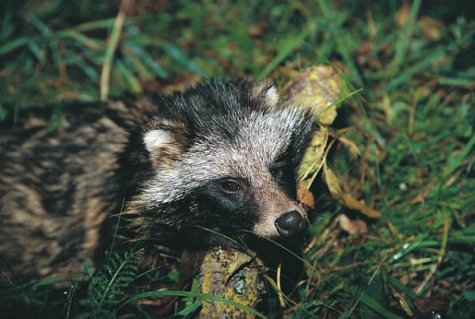Fame and Fall of the Raccoon Dog
Text and photo: Tiit Hunt
Translation: Liis from Forum
| Raccoon Dog | Nyctereutes procyonoides |
Black face mask and side whiskers, a somewhat raccoon-like face: an odd-looking foreign species, and the only canine species to hibernate.
The original homelands of the raccoon dog are quite far from Estonia – the Usurs, Manchuria, Korea, south-east China and Japan. During 1929-1950 more than 9000 raccoon dogs were resettled from the eastern parts of Asia to the European regions of the Soviet Union. From there they then spread quickly to Western Europe.
The first stray raccoon dog in Estonia was caught already in 1938, in South-eastern Estonia. Ten years later animals that had come from the east were met regularly.
In 1950, 86 raccoon dogs were let loose in various regions in Estonia, to enrich nature and as a valuable fur source. These robbers of bird’s nests were even let loose on the lands of Puhtu Ornitological Centre: a case of the rat guarding the wheat-bin. Thanks to its extremely good adaption ability and high fertility the raccoon dog spread quickly all over Estonia; only the fact that the fur was very well paid for kept the numbers within limits. Less than 20 years ago many people paraded their raccoon-dog fur hats, reminding of haystacks, on the streets. It was fashionable.
From its earlier protected species status, today’s undesirable species has evolved, whose numbers should be brought down to the lowest possible, and preferably even to none at all. The fur of this animal, sent into exile far in the West, is no longer valued here and interest in it as a source of income has fallen. Its natural enemies (wolf, bear, lynx) alone cannot keep the numbers within reasonable bounds and hunters will not bother to spend shots on it.
On the long list of the sins of raccoon dogs are the decrease of ground-nesting gallinaceous birds and the spread of rabies and scabies (mange).
How many raccoon dogs there are at the moment, roaming in our forests and on the shores nobody can tell exactly. But it may be said that they have never been as many as now.









